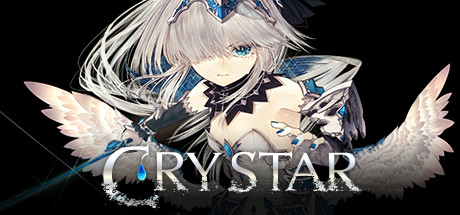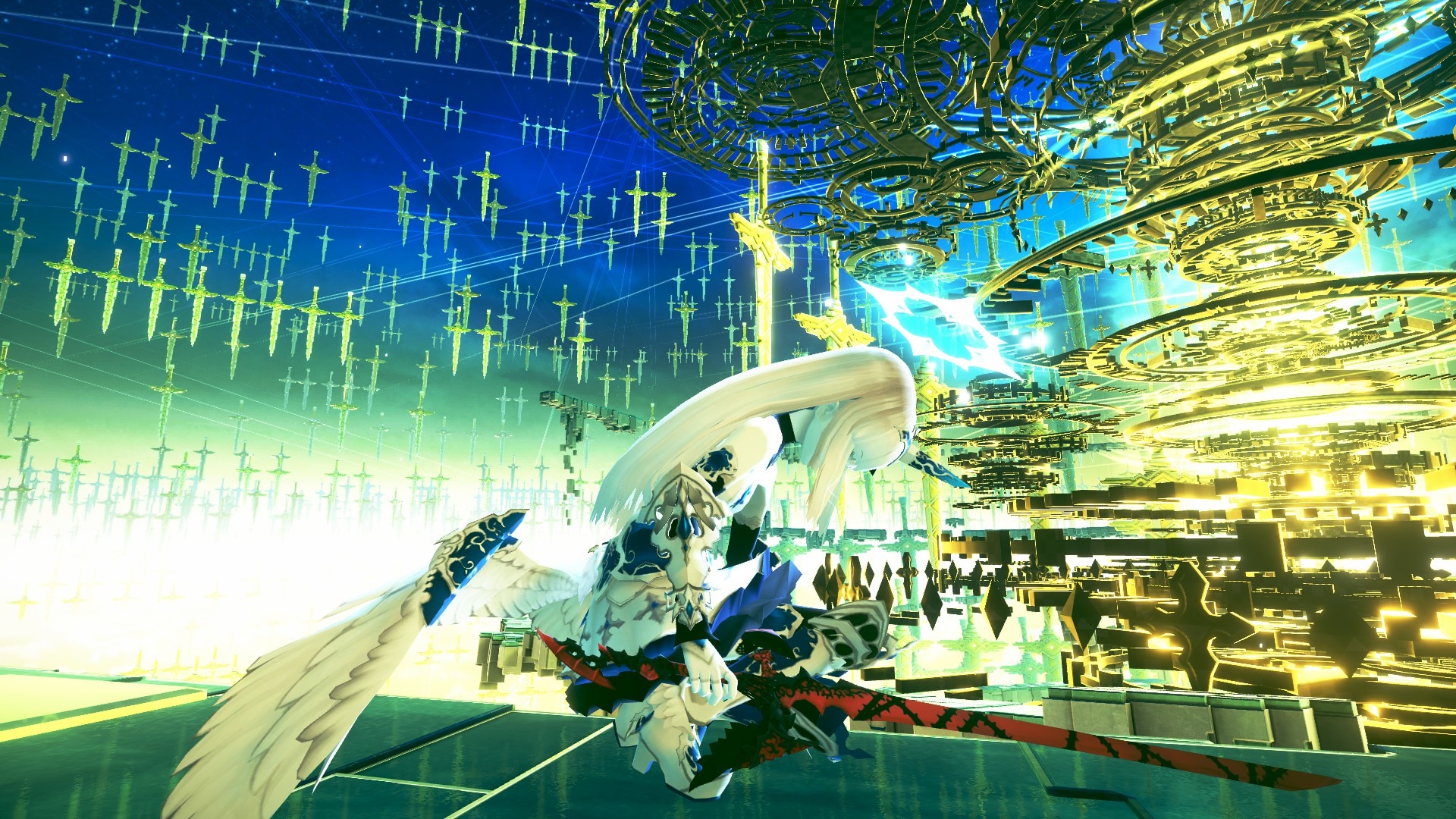
Crystar
Crystar is a casual action RPG whose hack & slash gameplay is fused with ample story snippets, just like dialogues in a visual novel. It’s the kind of game that some people, myself included, love because of how relaxing and uncomplicated the gameplay is, while others complain specifically about its simplicity and repetitiveness.
Crystar tells the story of Rei, a 15-years-old girl who finds herself transported from the living world into purgatory. When the soul of her younger sister is destroyed, she signs a pact with the two demon-overseers of the purgatory to collect 7 “Ideas” These are special crystals that contain the condensed tears generated by the self-consciousness of the purgatory souls reminiscing about their past human life. Rei wants to exchange them for the revival of her sister’s soul. Essentially, this means cleaning up the purgatory of restless souls by defeating them in combat, absorbing their memories and thoughts, then purifying them into Ideas.

The game is split into several sequential missions, and completing one of them will automatically return you to Rei’s room which acts as a game lobby. Here you’ll be able to purify the essence of the purgatory specters into shards of armor and combine them into pieces of gear that you can then equip. You can also improve them with passive bonuses, check the diary that describes the story events in a condensed form, or visit the codex of discovered enemies and read fragments of their backstories. You can also interact with the adorable Samoyed dog that guards Rei’s bed, or have phone calls with other characters (when this is required by the story).

As the game progresses, Rei gains three other allies (all of them being playable characters), and you will be able to switch to any of them during combat anytime. One is a ranged character, while the other two, just like Rei, are melee, but have different fighting styles and abilities, making them more or less suitable for certain boss fights. The missions are straightforward and usually spawn over several floors, which are sequentially visited. There are different paths to take for each level (all converging to the common exit) and extra rooms to explore harboring a mix of regular enemies and more difficult ones. The map makes it very easy to navigate the levels, as it shows you a top-down schematic of the rooms and the connections between them, together with undiscovered areas or paths.

In terms of the combat mechanics, these are extremely basic. Rei has a light attack and a heavy attack, together with four out of eight possible spells (for each character) that you can discover by progressing through the game (some being upgraded versions of the basic ones), and which you can freely choose to equip. Parrying is not a thing in Crystar; instead, you’ll avoid attacks by dodging. The enemies are very slow and there’s a huge time window (several seconds) from the start of the attack animation to the actual hit, thus you’ll have plenty of time to avoid the damage – although this becomes somewhat more challenging in bigger groups of enemies, as you need to keep track of all their individual timings.

Getting hit is not a big problem though, as the enemies do rather low damage. Hitting enemies will recover your SP, while HP can be recovered by eating consumables. These can be configured to be used “automatically”, meaning that whenever you reach a certain HP level an HP consumable will automatically be used. You don’t even need to monitor that, as the game literally makes you invincible as long as you have consumables in your inventory – which can be bought from the peddler at the start of each level, and they’re even very cheap. Attacks will also replenish your “tear” gauge – this is a mechanic that acts like an “ult” (ultimate): when it’s full, you can unleash a very powerful attack that lasts several seconds. There are no attack combos aside from a 3-times light attack, but there’s a hit counter that tracks your successful hits, which is broken if you don’t perform an attack in a 3-second window. The higher the hit count, the faster the “tear” fills.

Four different endings are available in Crystar, the first one reachable after playing through the entire game once, and the rest by replaying the last few chapters. Each of the subsequent playthroughs reveals a new aspect of the story, adding new layers to the plot that are built on top of what was previously revealed during the previous endings. Despite the innocent vibe given by the casual banter exchanged between the cute anime girl characters, the writing often deals with sensitive topics such as suicide, depression, abuse, and regrets but the final revelations have a pretty different vibe and are rather unpredictable because of how random they appear to be.

While most reviewers find the repetitive and simplistic combat to be the weakest point of the game, I personally think that the story is the one that lacks cohesion, complexity and clarity. It’s certainly enjoyable as it is, but the characters don’t appear to be consistent throughout the whole game. At times, this disappointed me, but other times they brought in an element of surprise. Another weak point is the lack of diversity regarding the enemy types. Even though the compendium lists 99 enemy types that one can encounter throughout the game, aside from sixteen unique bosses there are only eight categories of enemies, and in each category the enemies are just reskins of each other, otherwise having the exact same set of attacks.

Crystar is a very decent game that will keep you occupied for around 40 hours of story and another 20 hours of grinding if you want to reach 100% completion (max level, all entries in the compendium filled, all missions completed, etc). There aren’t any missable achievements, thus you can easily play it without a guide, although you might need some help after the main story to complete the creature compendium.

However, if you’re looking for an action RPG with a complex battle system – look elsewhere, this isn’t one. If on the other hand, you’re looking for some casual hack & slashing or a hefty story to read – then look no more, you just found the perfect mix of both.
Which is better? Crystar or Crymachina?
| Story – core message | Crymachina | |
| Story – characters | Crymachina | their personalities are more interesting and unique |
| Story – length | Crymachina | rough estimate: 75% of the time will be spent on reading dialogues and watching cutscenes, while in Crystar it’s around 30% |
| Combat – fun | Crystar | more enemies to kill, more exploration |
| Combat – bosses | Crymachina | more interesting bosses |
| Combat – difficulty | Crystar | Crystar enemies are easier to kill and they do considerably less damage |
| Combat – repetitiveness | Crymachina | Crystar is considerably more grindy than Crymachina) |
| Combat – character flexibility | Crystar | free to switch to another character, even in mid-fight |
| Combat – controls | Crystar | selecting which ability to trigger during a fight is too inconvenient in Crymachina |
| Menu navigation | Crymachina | Crystar has very confusing and cumbersome way to navigate menus, especially for equipment upgrades |
| Environment design | Crymachina | Crymachina’s spacious areas are extremely beautiful, although they don’t leave space for exploration |
| Visuals | Both | both have very nice 3D anime style artwork |
| Voice-overs | Both | both have very good voice acting |
| Music | Crymachina |
You are invited to read my review for Crymachina if you’d like to find out more about it.